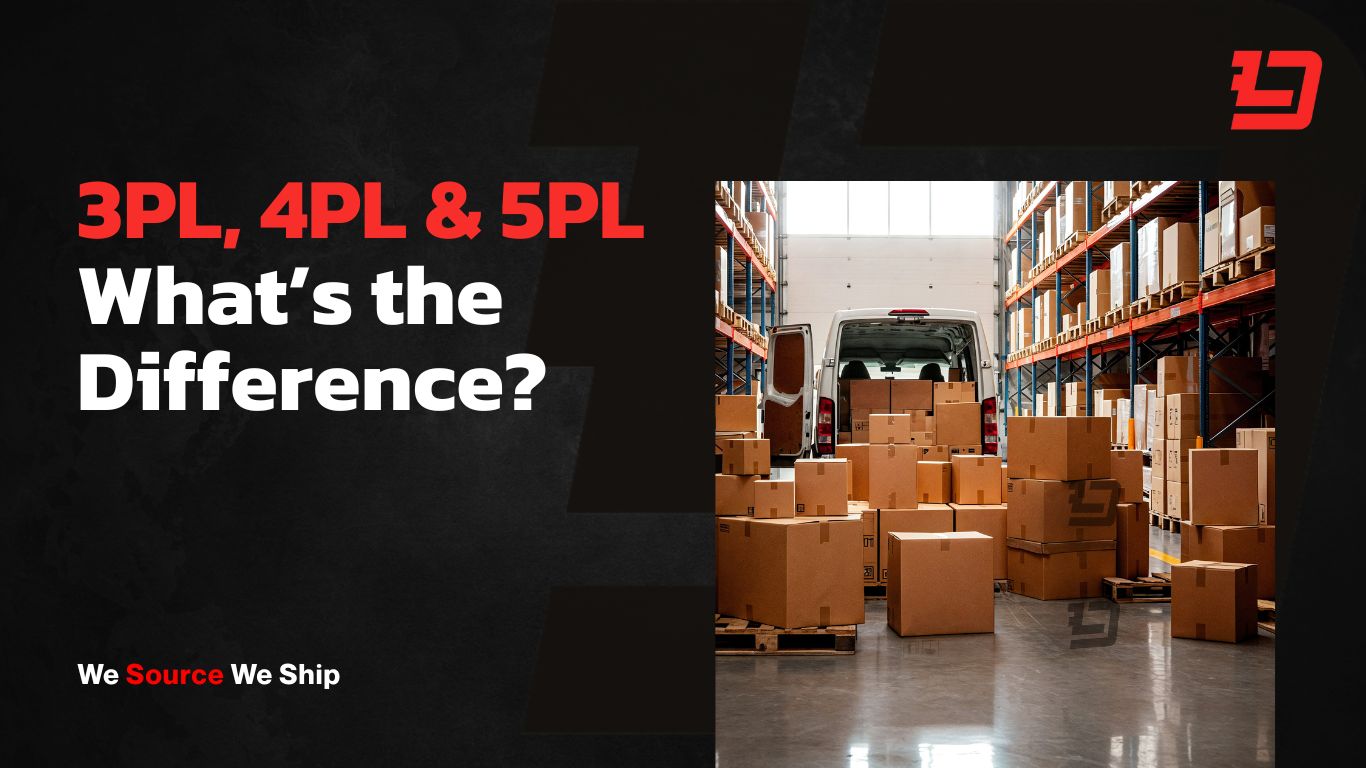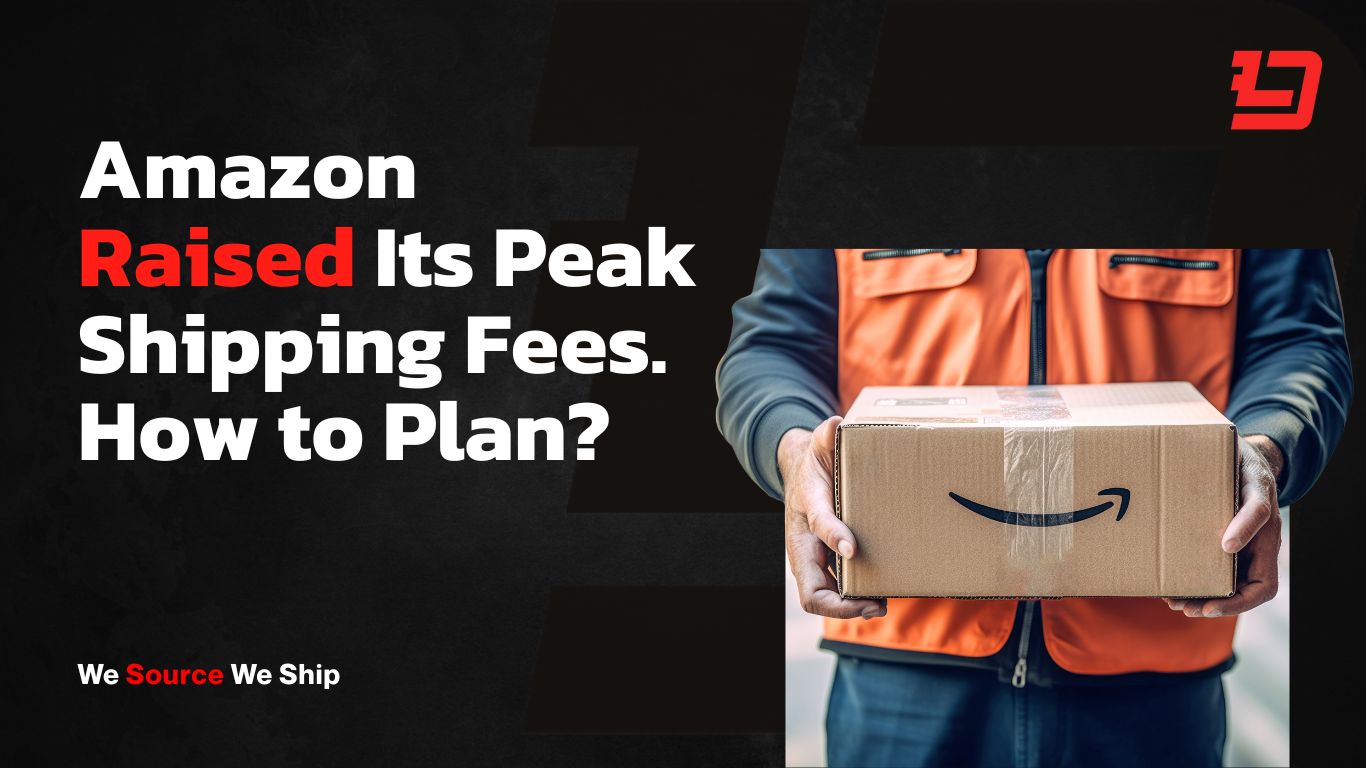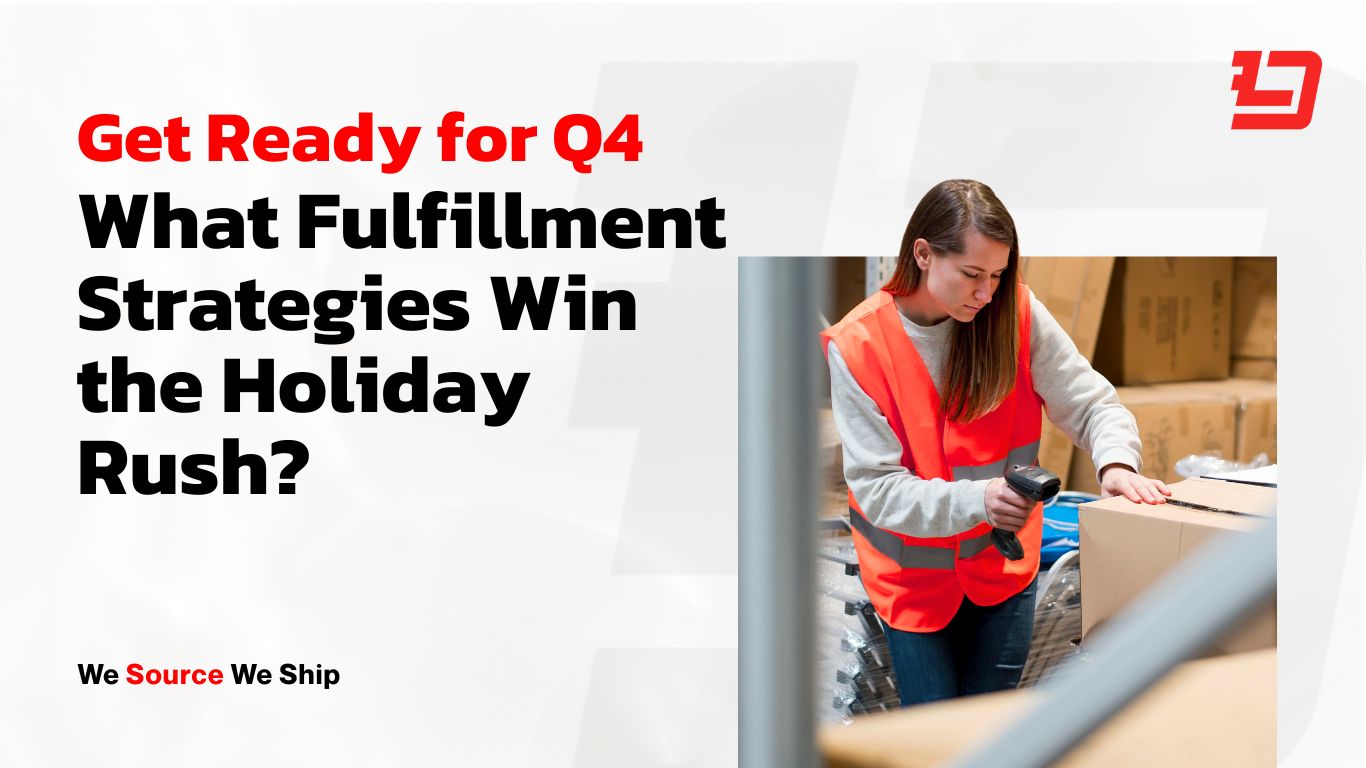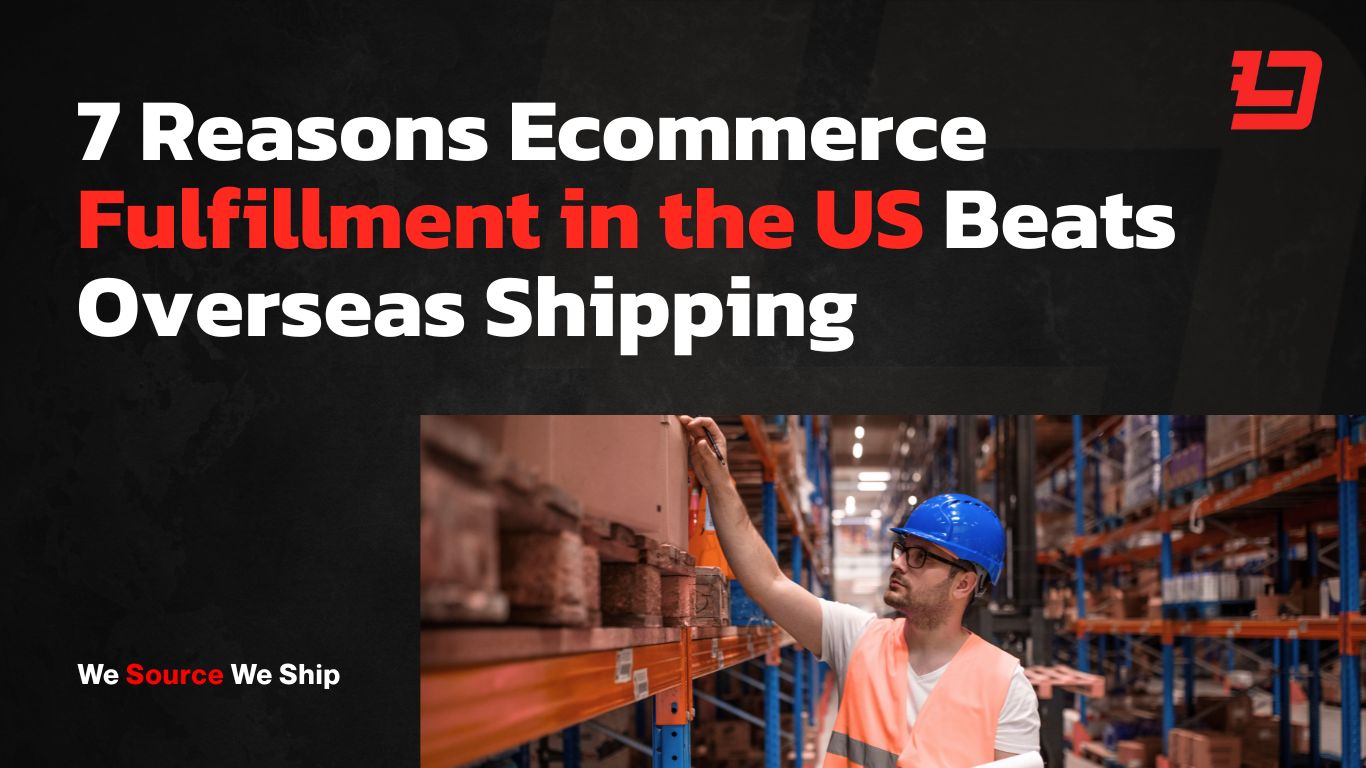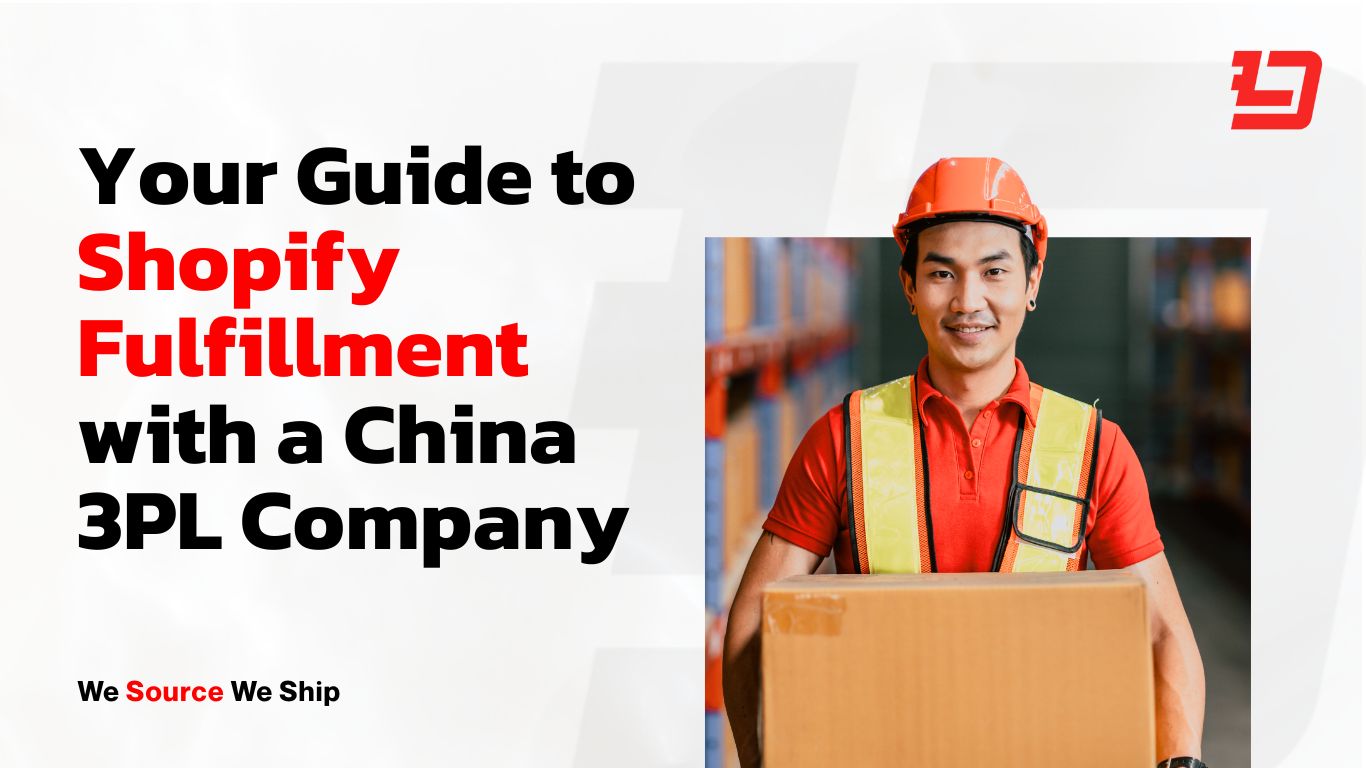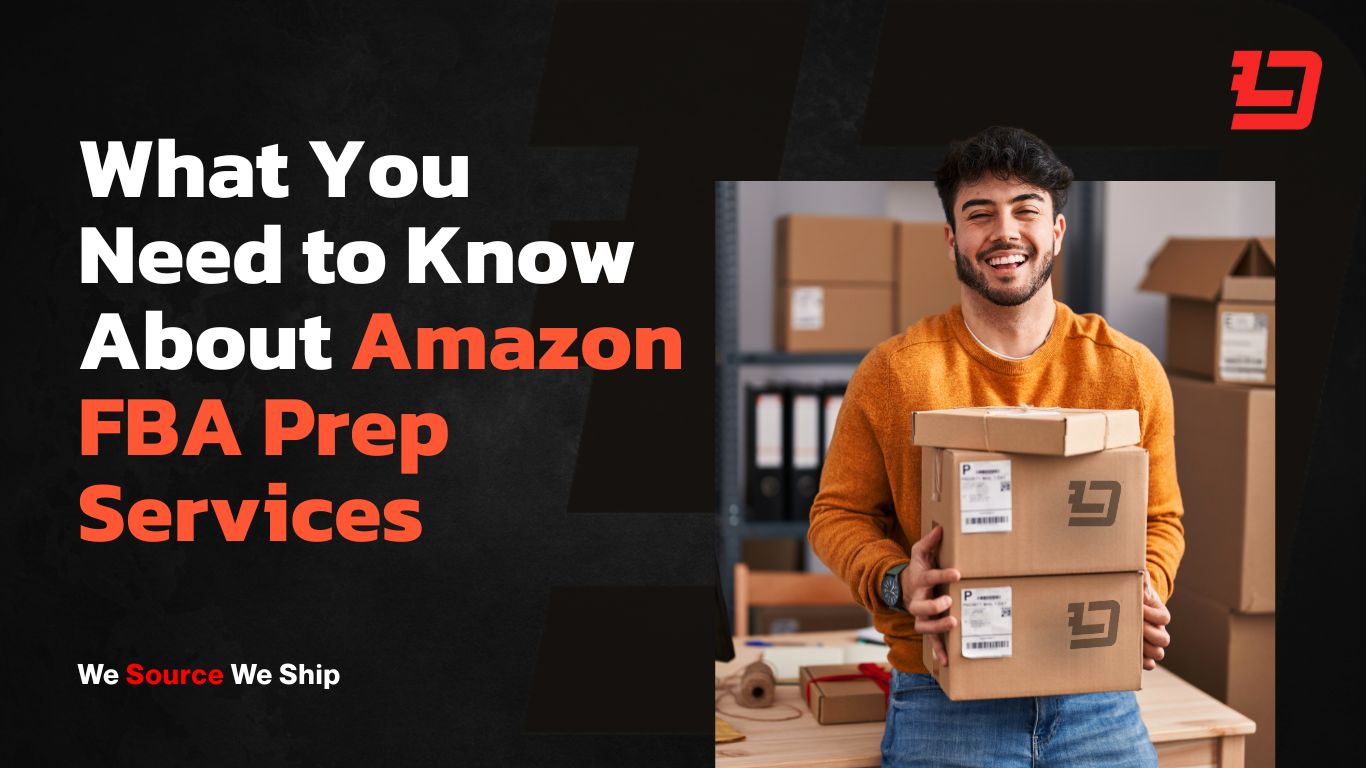As ecommerce continues to expand, brands are faced with a complex logistics landscape. Choosing the right fulfillment model is crucial for scaling efficiently and meeting customer expectations. The global logistics industry, particularly third-party logistics (3PL), is projected to grow significantly in the coming years. In fact, ecommerce fulfillment alone is expected to reach $900 billion globally by 2025, as ecommerce companies continue to rely on 3PL providers to handle shipping and logistics.
With so many logistics models to choose from, it’s essential for ecommerce owners to understand the differences between 3PL, 4PL, and 5PL, and how these models impact their supply chain decisions.
Let’s break down what each of these models entails, their advantages, and which is best suited for your ecommerce brand.
What is 3PL (Third Party Logistics)?
3PL is the most common logistics model used by ecommerce businesses. It involves outsourcing your entire logistics process, including warehousing, shipping, order fulfillment, inventory management, and sometimes even returns management, to a third-party service provider.
In a 3PL model, a logistics provider handles warehousing and fulfillment, shipping the products to your customers via their network of carriers. It’s often a cost-effective solution, especially for smaller businesses that want to scale without investing heavily in infrastructure. Lansil Global offers 3PL services to ecommerce brands, helping them store inventory in strategically located U.S. warehouses for 2–4 day delivery, all while lowering fulfillment costs.
3PL providers offer flexibility, making it easy for brands to adjust to changing order volumes or expand into new markets without major investments in logistics infrastructure. This model is ideal for ecommerce businesses looking to scale efficiently without the added complexities of managing their own fulfillment operations.
Advantages of 3PL:
-
Cost Savings: With access to discounted shipping rates and economies of scale, 3PLs help brands reduce fulfillment costs.
-
Flexibility: Easy to adjust to changing order volumes and expand into new markets without the need for heavy investments in infrastructure.
-
Focus on Core Business: Outsourcing logistics allows brands to focus on product development, marketing, and customer service.
Best For:
-
Small to mid-sized ecommerce brands that need to scale quickly and don’t want to invest heavily in warehousing, inventory management, and shipping infrastructure.
What is 4PL (Fourth Party Logistics)?
4PL goes a step further than 3PL by managing the entire supply chain on behalf of a business. A 4PL provider doesn’t just handle logistics operations, but also oversees the management of 3PL and other logistics partners. Essentially, the 4PL acts as a single point of contact for the brand’s entire supply chain.
4PL providers coordinate and optimize the entire supply chain, from raw material sourcing to final delivery. They ensure that each step in the logistics process is handled efficiently by the right partner, minimizing waste and streamlining operations. They also typically integrate technology to provide real-time tracking, predictive analytics, and better inventory management.
Advantages of 4PL:
-
Full Visibility: 4PLs offer real-time data and tracking, giving brands a clear view of their supply chain from start to finish.
-
Optimized Supply Chain: By managing multiple logistics providers, a 4PL can reduce inefficiencies and optimize each part of the supply chain.
-
Strategic Management: 4PLs take a more proactive role in managing costs, inventory, and logistics partners to streamline operations.
Best For:
-
Mid to large-sized brands with complex logistics needs and a global reach, looking for more strategic management of their supply chain.
-
Companies with multiple 3PLs or logistics partners that need oversight and optimization.
What is 5PL (Fifth Party Logistics)?
5PL is the most advanced logistics model, primarily focused on digital and technology-driven solutions. A 5PL provider handles all aspects of the supply chain, including managing 3PL and 4PL partners, but also incorporates advanced technologies such as AI, machine learning, and blockchain to optimize logistics operations in real time.
A 5PL goes beyond traditional supply chain management by leveraging cutting-edge technology to offer a fully integrated system that can predict demand, automate inventory, and optimize shipping routes. This model is ideal for large companies with complex, multinational supply chains that require real-time decision-making.
Advantages of 5PL:
-
High Automation: Real-time data-driven decisions and AI predictions enable efficient logistics without manual intervention.
-
Complete Supply Chain Optimization: By utilizing advanced technologies, 5PLs provide dynamic inventory management, route optimization, and improved demand forecasting.
-
Global Operations: 5PLs are ideal for multinational companies managing complex international logistics across different regions.
Best For:
-
Large, multinational enterprises with highly complex supply chain needs, particularly those looking to leverage advanced technologies to optimize global operations.
-
Tech-savvy companies that prioritize data analytics, real-time optimization, and full automation of their logistics.
Key Differences Between 3PL, 4PL, and 5PL
| Feature | 3PL | 4PL | 5PL |
|---|---|---|---|
| Core Services | Warehousing, shipping, fulfillment | Supply chain management, 3PL oversight | Full supply chain optimization, technology-driven solutions |
| Level of Integration | Operational management | Strategic management | Full automation and optimization |
| Technology Use | Basic logistics systems | Advanced logistics tech | AI, machine learning, blockchain |
| Focus | Operational efficiency | Holistic supply chain management | Cutting-edge tech and automation |
| Best For | Small to mid-sized ecommerce brands looking to scale efficiently | Mid to large-sized brands with complex logistics needs and a global reach | Large, multinational enterprises with complex global operations needing full automation and real-time optimization |
3PL, 4PL, 5PL – Which is the Best Solution for Your Company?
Choosing the best logistics model depends on your business size, complexity, and growth strategy. Here’s a breakdown to help you decide:
-
3PL is best for small to mid-sized brands that need to scale quickly and want to keep logistics simple and cost-effective. It’s a great option if your logistics needs are straightforward and you want to outsource warehousing and fulfillment.
-
4PL is ideal for brands with more complex supply chain needs. If you’re already using 3PL or multiple logistics providers and need a strategic partner to oversee and optimize the entire supply chain, 4PL is the right choice.
-
5PL is best suited for large, multinational enterprises with highly complex, global supply chains. If you need full automation, real-time optimization, and integration across your logistics operations, 5PL is the most advanced solution available.
At Lansil Global, we specialize in 3PL services, helping ecommerce brands streamline their logistics operations for faster, more efficient delivery. With dual U.S. warehouses in Nevada and Pennsylvania, we offer 2–4 day delivery to U.S. customers. Our China hub provides cost-effective solutions for global fulfillment.
Whether you’re looking for basic logistics management (3PL) or more advanced supply chain solutions, Lansil Global’s flexible services support your growth at every stage.
We offer 3PL solutions for ecommerce brands aiming to scale efficiently and cost-effectively. With our China hub and U.S. fulfillment services, we make it easy to expand your operations without the hassle of managing logistics.
Ready to streamline your logistics? Contact Lansil Global today to explore how our 3PL services can help accelerate your ecommerce growth.


